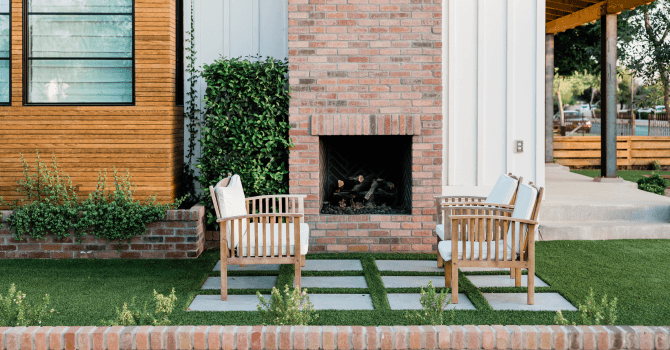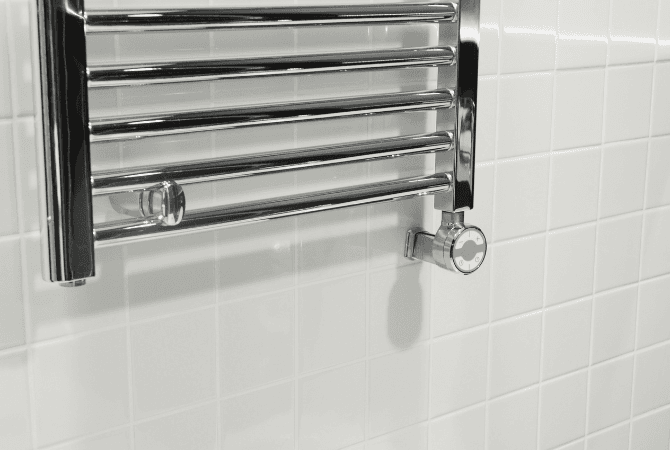Which Is Better Suited to Your Project: A Solarium or Sunroom?
By Editorial Team
Updated on July 25, 2025

Are you looking to add to your current living space? Whether it’s a solarium or a sunroom, they’re both great options. The question is, what’s the difference between the two?
Solarium vs. Sunroom: Which to Choose?

It’s a rather straightforward question when it comes to choosing between a solarium and a sunroom: Why are you looking to build an extension? If it’s to benefit from warm weather and temperatures while being in a screened-in enclosure, stop looking and go with a sunroom.
Why? Because between June and August, you’ll enjoy about 252.7 hours of sunshine per month. Fall through winter—November through January that is—the number of sunshine hours drops to about 89.5.
Therefore, based on a typical December day in Eastern Canada, it’s about 8 hours and 38 minutes of daylight, meaning you have about 10 days worth of sun per month. Knowing ahead of time that you won’t sit in your solarium every day, it’s best to stick with a sunroom.
On the other hand, if you already know that this extension will double as a living space, meaning a whole new room that you intend on using during the wintertime, building a solarium is the better option.
What Is the Difference Between a Solarium and a Sunroom?
According to the APCHQ—Association des professionnels de la construction et de l’habitation du Québec—a sunroom differs from a solarium on account of the following:
It's not heated
It's not insulated
It's not a year-round structure
Based on the three factors mentioned above, a sunroom is technically not an integral part of a home, whereas a solarium is:
Heated
Insulated
Intended for year-round use
Therefore, solariums, unlike sunrooms, are regulated by the National Building Code (NBC), since they're considered an inherent part of a structure.
Three-Season Solarium: A Happy Medium
A 3-season room has so many benefits that shouldn’t be overlooked:
It’s cheaper
Used spring through fall
Can be heated with space heaters (be mindful of condensation)
During the summer, a solarium can swiftly turn into a mosquito-feeding frenzy. Therefore, we highly recommend installing screens over your openings. Moreover, during a rainy spring season, mosquitos aren’t a rarity.
Solariums vs. Sunrooms: Pros, Cons, and Canadian Specificities

Thermal Insulation
Before delving into the insulation of it all, consider its positioning. A north-facing solarium is highly recommended, but to ensure year-round use without needing to bundle up like a starfish, you have to establish a heating budget for the winter season.
Another way to go about it is to still favour a north-facing position but one angled toward the east or west. Doing so is recommended if you’re looking to build a sort of conservatory.
In any case, solarium insulation is mainly done at floor level and within the structure itself. Typically, a solarium or sunroom floor is built atop a raised, hollowed platform. As such, drafts coming in through the structure will significantly cool the room during the winter.
To offset this issue, while still adhering to guidelines established by the building code for exposed floors (minimum insulation rating: R-29.5), adding at least 5 inches of sprayed urethane is a must.
As for the rest of the solarium, favour:
Wood
Double- or triple-glazing
Double-glazing is great as it allows for plenty of sunlight to filter in, yet its thermal resistance (R-value) only ranks between 3 and 3.8. On the other hand, triple-glazing, being thicker, doesn’t allow for as much natural light to seep in, but its R-value is somewhere between 7 and 8.
Nonetheless, even with decent insulation, you might not be able to store as much heat in a north-facing sunroom.
Local Regulations
To begin, note that a solarium can’t be built by just any available contractor. The latter must hold a general or specialized contractor licence, issued by the Building Code Commission (BCC).
Then, given that a solarium is a sort of home addition or extension, it is, as we’ve already stated, subjected to building code regulations. Therefore, depending on the type of solarium you want to build, it can be:
Combustible (if your home was built with combustible materials)
Fireproof
Equipped with a fire escape
Fire protected
Freezeproof
Of habitable conditions (height under the cornice, electrical outlets, heating, etc.)
Moreover, building a solarium might also entail structural changes to your home's existing structure. This isn’t an unlikely situation because you’re adding square footage.
On top of that, there are local regulations. Inquire with your municipal authorities to better understand all standards to meet.
Here are some of the general rules to abide by:
You must get a building permit or certificate of authorization
The solarium or sunroom must be built at ground level
The structure can’t exceed 60% of your home's rear facade
The total surface area must be at least 70% glazed
Must be built using the same materials as the dwelling’s first floor
Seasonal Room Use
With what was detailed up until now, you already have a better grasp of how a solarium differs from a sunroom—the former is heated and insulated, meaning it can be used year-round.
However, by further researching solariums, you’ll note that there are two different models:
4-season solariums
3-season solariums
The difference, you ask? A 3-season solarium is devoid of a foundation and doesn’t feature double-glazing glass walls or insulation. Basically, it's not a typical “solarium” by any stretch of the imagination, but more of a sunroom or sun porch at this point. Legally speaking, you don’t need to request a city-issued building permit.
Discover everything you should consider when choosing a solarium.
What to Know About Building a Glass Solarium

Key Constructions Steps: How to Build a Solarium the Right Way
Step 1: Comply with building standards
Whether they’re detailed in the Building Code or your city’s bylaws, note that solarium-specific guidelines work based on the structure's size, the position of your house, as well as your area of residence.
You also have to stay within the bounds of the building permit you've received. Otherwise, you risk facing legal consequences from city authorities.
Step 2: Excavate the foundation
A 4-season solarium requires a concrete foundation. In certain provinces, and depending on where you live, the foundation must be dug 3 feet, 11 inches to 5 feet deep, ensuring the structure withstands freeze.
Step 3: Pour the structural slab
Sonotube piles are used to build a lot of outdoor living structures, like decks and balconies. In terms of solariums, these piles prove to be useful. However, it’s best to hire the services of an engineer.
Moreover, while a lack of double-glazing and insulation makes for a rather lightweight 3-season solarium, the same can’t be said about a 4-season structure. Therefore, based on the structural weight and the composition of the floor, the slab’s surface can be made bigger.
Note that in some regions, the maximum load-bearing capacity of a single Sonotube pile is 75 kPa, which is roughly 1,500 lb/sq.ft. Note that said weight limit does differ from one region or province to the next. Request an expert opinion.
Step 4: Build the structure
If you didn’t purchase a DIY kit or aren’t considering hiring the services of a qualified contractor, the simplest way to build a solarium is by using wood. To do so, start by assembling each structural wall on the ground, then hoist them up, securing them to the concrete slab.
The roof’s framing is traditionally sloped, allowing for rainwater runoff.
Wood-Frame Construction: A Sought-After Option
Most solariums are built with wood or aluminum. Oftentimes, builds combine both materials.
Wood is favoured by a lot of homeowners for its aesthetic aspect and longevity, provided it’s well-maintained. Before landing on wood, ask yourself how much time you have, every year, to dedicate to maintaining a wooden structure.
Is a Solarium Cheaper than a Sunroom?
No, solariums are much more expensive compared to sunrooms. Three-season models, measuring 12’ x 12’ with insulated floors, cost about $25,000, including taxes.
A 4-season solarium costs about 30% more. A similar structure with the same square footage costs about $32,500.
As for additional features or accessories, such as a heated slab, additional fees run about $800.
For more information about how to build a solarium, click here.
What Are Sunrooms?

Sunroom-Specific Building Materials
They come in threes:
Wood
Aluminum
PVC
Wood is great given that it can span large surfaces while still providing effective insulation. However, said material requires regular maintenance.
Aluminum, like that used for Tendal shelters, is also tailored to long spans. Additionally, it’s a relatively thin material, meaning there's more room for glazed surfaces. It requires little maintenance and is a decent insulator. However, it does scratch easily.
PVC is the cheapest way to go, but over expansive surface areas, the material is thicker, thereby decreasing the aesthetic look of the build, which isn’t an issue when using wood or aluminum.
How to Build a Sunroom Using a DIY Deck Kit
If you don’t want to have to hire professionals, there’s always the DIY deck kit route. The goal is to add a roof over your deck, turning it into an enclosed outdoor living space.
Lay the structural beams on sawhorses just as they’ll be positioned when upright. There are two types of profiles used:
End profiles
Intermidiate profiles
Pre-drill your profiles and insert rubber gaskets, resting the glass or multiwall polycarbonates against them. To ensure your light fixtures are positioned optimally, affix them in the middle of select beams. All wires should come out on the same side.
The height of your sunroom ultimately hinges on the height of your gutters. Use the tangent formula to determine the span of the roof. The front-facing beam should be positioned using a lift and then connected to the end profile by an intermediate profile.
The posts can be anchored to the concrete foundation. Remember to make an opening in the posts to drain rainwater via a gutter-like drain pipe.
Now that the structure is upright, the only thing that’s left to do is add the multiwall polycarbonates or glazing.
How Much Should You Budget for a Sunroom?
The most budget-friendly sunroom or 3-season outdoor living space costs between $1,320 and $1,740/sq.m. The most expensive model—wood—costs between $3,480 and $4,320/sq.m.
Why Build a Solarium or Sunroom? Uncover Their Home-Specific Benefits

Their Impact on Your Backyard
A solarium increases your habitable square footage, yet will take up some of the green space in your backyard. Therefore, depending on the size of your property, you risk having a home that’s too big for the land on which it sits.
Another important factor: A high-end solarium can revamp the look of your home and increase its resale value. In fact, the bigger the house, the higher its real estate value.
However, if you decide to build a solarium to eventually increase your home’s resale value, don’t linger on it as most solariums have a 25-year lifespan, tops.
Will a Solarium or Sunroom Impact My House’s Market Value?
It’s tough to say. What’s for sure is that it’ll add to your home’s living space, but it’ll also increase your heating bill during the winter and air conditioning costs during the summer months.
Having a solarium is a sort of double-edged sword. On one hand, it increases your property’s market value or may convince a potential buyer to sign off on an offer to purchase. On the other, it may come with a load of negative consequences:
Water leaks over time
Defaulting on approvals (local authorities, homeowners association)
Hidden defects
As a result, building a solarium solely on the premise of increasing your home’s market value isn’t necessarily the best way to go.
FAQ: Solarium vs. Sunroom

How can I keep my sunroom cool during the summer?
Choose an east- or west-facing installation, hang blinds or thermal curtains, and opt for good ventilation with sliding glass windows or well-oriented openings. Such solutions can limit heat ingress, making for a more comfortable setting.
How can I build a 4-season solarium?
Build a freeze-resistant foundation insulated with spray polyurethane and thermal glazing, and install a heating system. Comply with building code standards to guarantee year-round use.
What do you call an open sunroom?
An open sunroom is known as a pergola. It’s a covered yet not enclosed porch, ideal for benefiting from the outdoors while still being shielded from sun and rainfall.
Why buy a sunroom?
A sunroom makes for a bright and versatile room adjacent to your house. It increases your home’s square footage, adds value to your property, and allows you to benefit from your backyard whenever you please.
How can I change my solarium’s polycarbonate panels?
Remove the damaged panels, install new ones according to the manufacturer’s instructions, and apply a waterproofing sealant to prevent leaks. If necessary, hire a professional.
What is the difference between a solarium and a conservatory?
A solarium is a modern glass-enclosed space (glass walls & ceiling) designed for relaxing and enjoying sunny days, with a focus on clear views of the outdoors from which one can see stars at night. On the other hand, a conservatory is a more traditional structure, often ornate, originally made for growing plants. Conservatories are better insulated and can be used as living spaces or for horticulture.
Looking for something else?
Related articles
The latest industry news, interviews, technologies, and resources.

Editorial Team
•07 Nov 2023
Are you looking to design a cozy and relaxing lounge area in your backyard to spend quality time with your family? Even though summer is coming to an end, nothing’s keeping you from planning ahead for next summer! Here are a few ideas to help you design your landscaping project accordingly.

Amanda Harvey
•07 Nov 2023
Renovation and remodelling projects aren’t the cheapest ventures. Not only do they take time and effort, but they can also leave your home in a state of unrest.

Editorial Team
•15 Nov 2024
Getting undressed in a bathroom should always be a treat. However, it often turns into an ordeal. And, as it turns out, the secret lies within the heating system, from which we expect an immediate, cozy warmth. What more could you ask for from a bathroom heater? So, why not get one that’s programmable and doubles as a towel warmer?

Cynthia Pigeon
•08 Oct 2025
Welding is a creative trade, the likes of which few blue-collar trades still encompass. Skilled welders can work in any environment with a variety of materials and techniques. From skills to salary to job opportunities, learn everything there is to know about welding.

Editorial Team
•07 Nov 2023
The sets of your favourite films can sometimes serve as an inspiration to transform your interior decor. Whether a period piece, a 1960s inspired environment or a more modern layout, there is always room to draw inspiration from these much-loved stories.